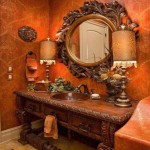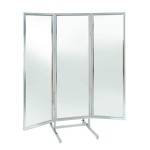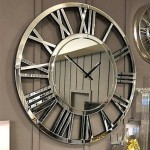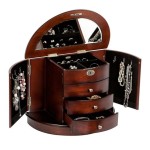How to Solve Mirror Image Questions
Mirror image questions are a common type of problem encountered in various fields, including aptitude tests, logical reasoning exams, and even in everyday life. These questions involve recognizing and understanding the concept of reflection, which is the process of an image being flipped across a vertical or horizontal axis. Understanding how to solve mirror image questions can significantly improve problem-solving skills and analytical thinking.
Understanding the Concept of Reflection
The core of mirror image questions lies in grasping the concept of reflection. When an object is reflected in a mirror, it appears reversed along a specific axis. This axis can be vertical (like a standard mirror) or horizontal (like a reflection in a pool of water). Imagine holding a piece of paper with the letter 'R' written on it in front of a mirror. The reflection you see will be the letter 'R' flipped horizontally, appearing as 'Я'. This reversed version of the original image is the mirror image.
Key Strategies for Solving Mirror Image Questions
Solving mirror image questions effectively requires a combination of understanding the concept of reflection and applying specific strategies. Here's a breakdown of key approaches:
1. Identify the Axis of Reflection
The first step in solving mirror image questions is identifying the axis of reflection. This is the line across which the image is flipped. The axis can be either a vertical line, a horizontal line, or even a diagonal line, depending on the question. For example, if the question presents two images and asks you to identify the mirror image, look for how the images are flipped: vertically, horizontally, or in another direction.
2. Visualize the Flipping
Once you've identified the axis of reflection, visualize flipping the image across that line. Imagine each part of the image being reflected like a mirror. Pay attention to how each point on the original image translates to its corresponding point on the mirror image. If the question involves a shape, envision how the shape would appear if you were to fold it along the axis of reflection. This will help you understand how the shape will change its orientation.
3. Check for Changes in Orientation
A crucial aspect of mirror image questions is recognizing changes in orientation. The reflection will reverse the image along the axis. For instance, if the axis is vertical, letters like 'b' and 'd' will be flipped, while letters like 'a' and 'm' will remain unchanged. Similarly, if the axis is horizontal, the image will be flipped upside down. Careful attention to these changes in orientation will lead to accurate solutions.
4. Use a Tool or Technique
To assist in visualizing the reflection, consider using a simple tool or technique. For example, you can take a sheet of paper and fold it along the axis of reflection. Then, draw the original image on one side of the paper and use it as a guide to trace its mirror image on the other side. This hands-on approach can help you understand the transformation process more clearly.
5. Practice and Familiarization
The most effective way to improve your ability to solve mirror image questions is through consistent practice. Familiarize yourself with various types of questions and axes of reflection. Begin with simple questions and gradually work your way up to more complex ones. Practice makes perfect when it comes to recognizing and applying the concepts of reflection.

Clock Reasoning Trick Mirror Image

Mirror Images Introduction Alphabet Based Alpha Numeric Figure And Clock Study Score

How To Calculate The Focal Point Of A Convex Mirror Using Equation Physics Study Com

Diagrammatic Reasoning Test How To Solve Mirror Questions

Mirror Image And Water Reasoning Tricks Latest Ssc Cgl 2024 All Asked Questions

How To Calculate The Height Of An Image For A Concave Mirror Physics Study Com

Short Tricks To Solve Mirror And Water Image Reasoning Questions For Ssc Railway Exams 2024

Diagrammatic Reasoning Test How To Solve Mirror Questions

Discover The Fascinating World Of Mirror And Water Images

Find Mirror Image Of A Point In 2 D Plane Geeksforgeeks








